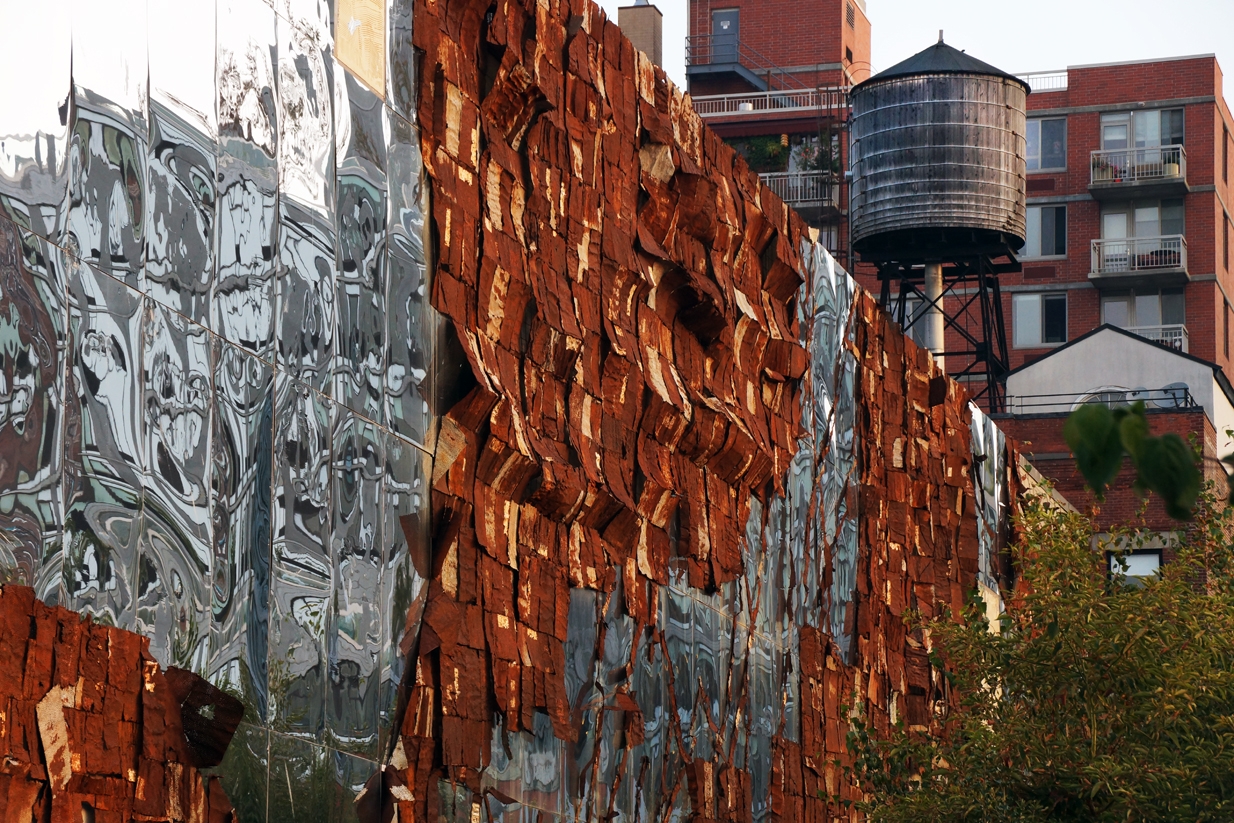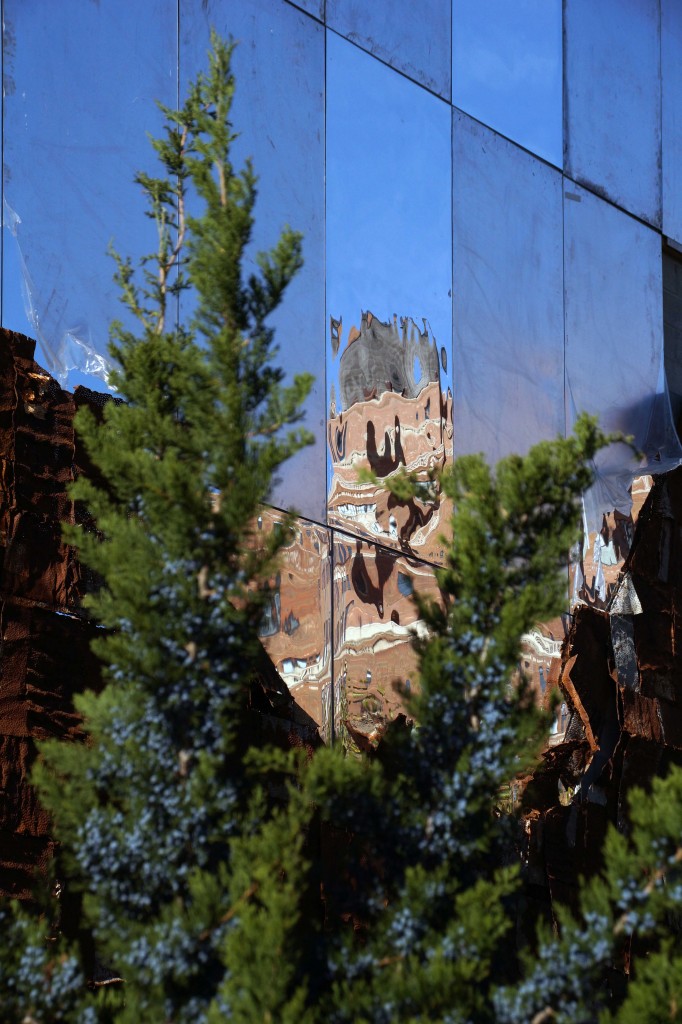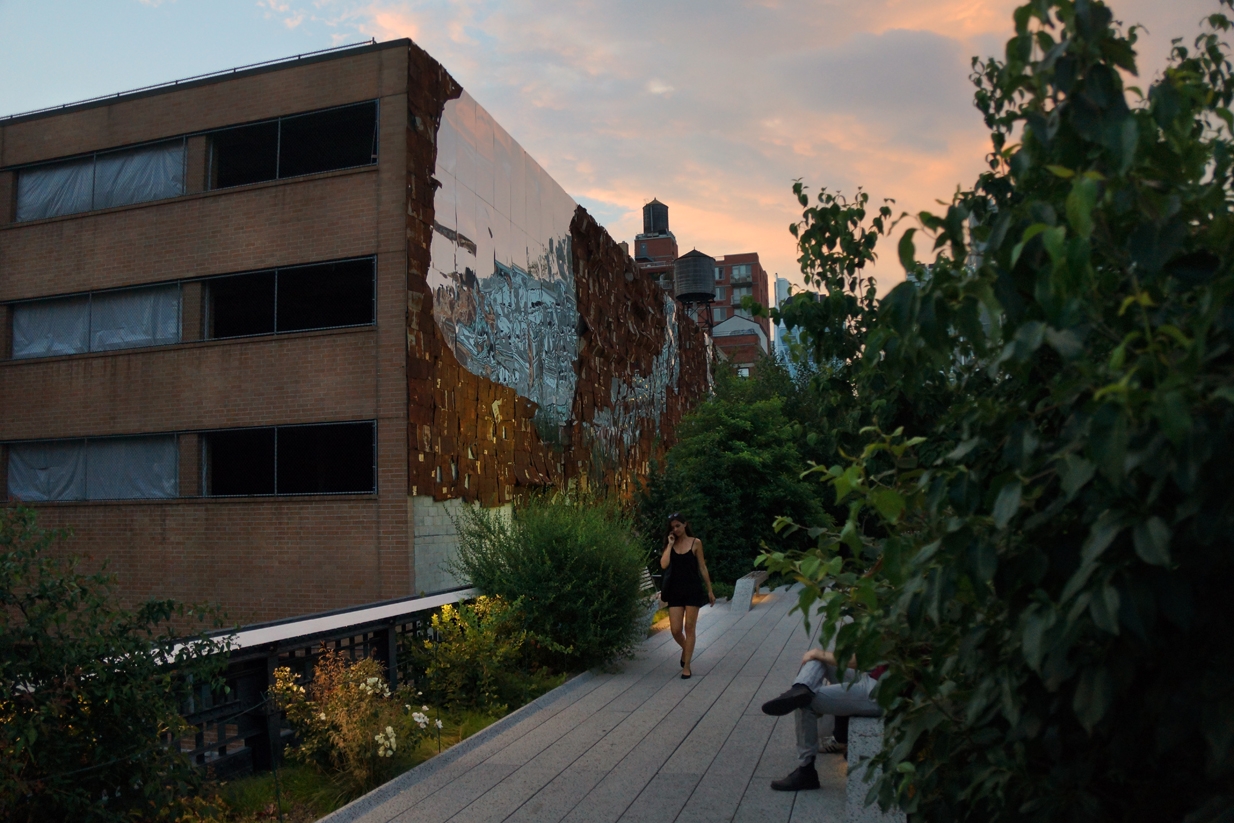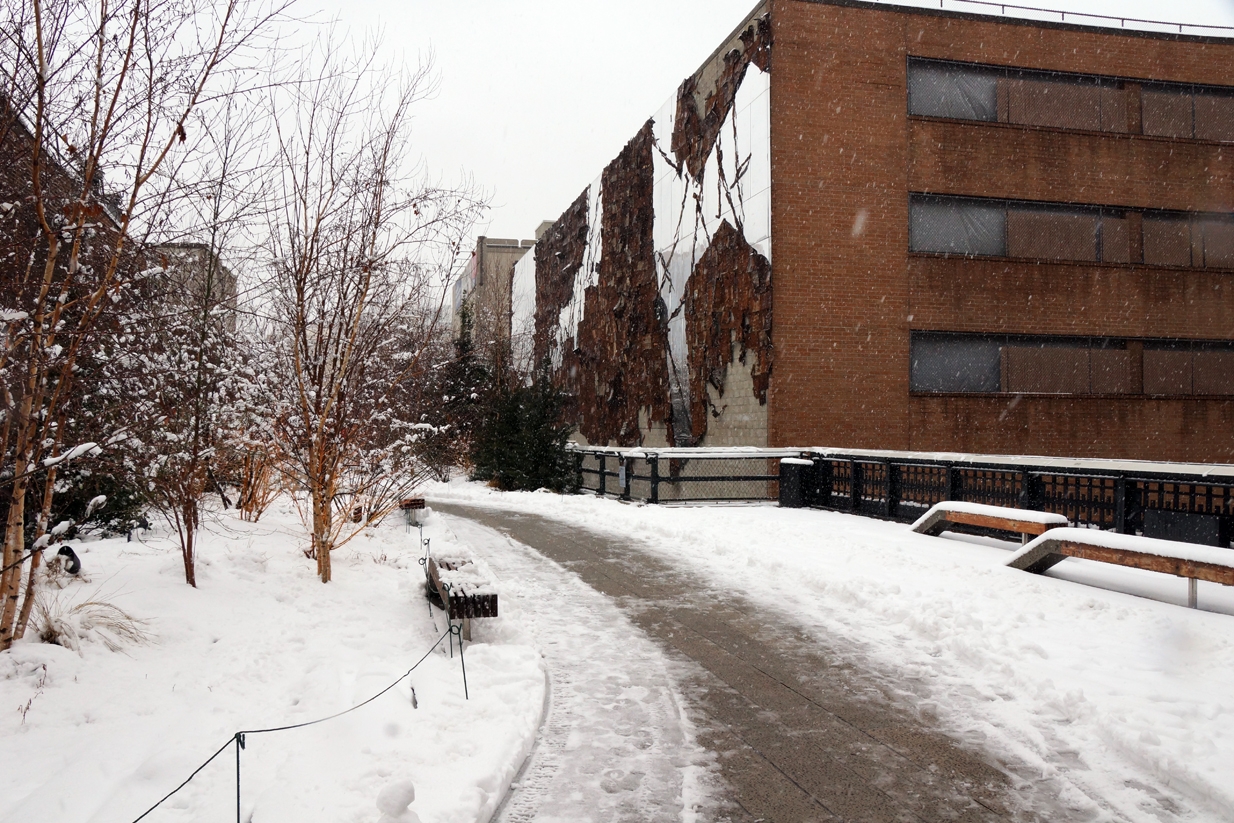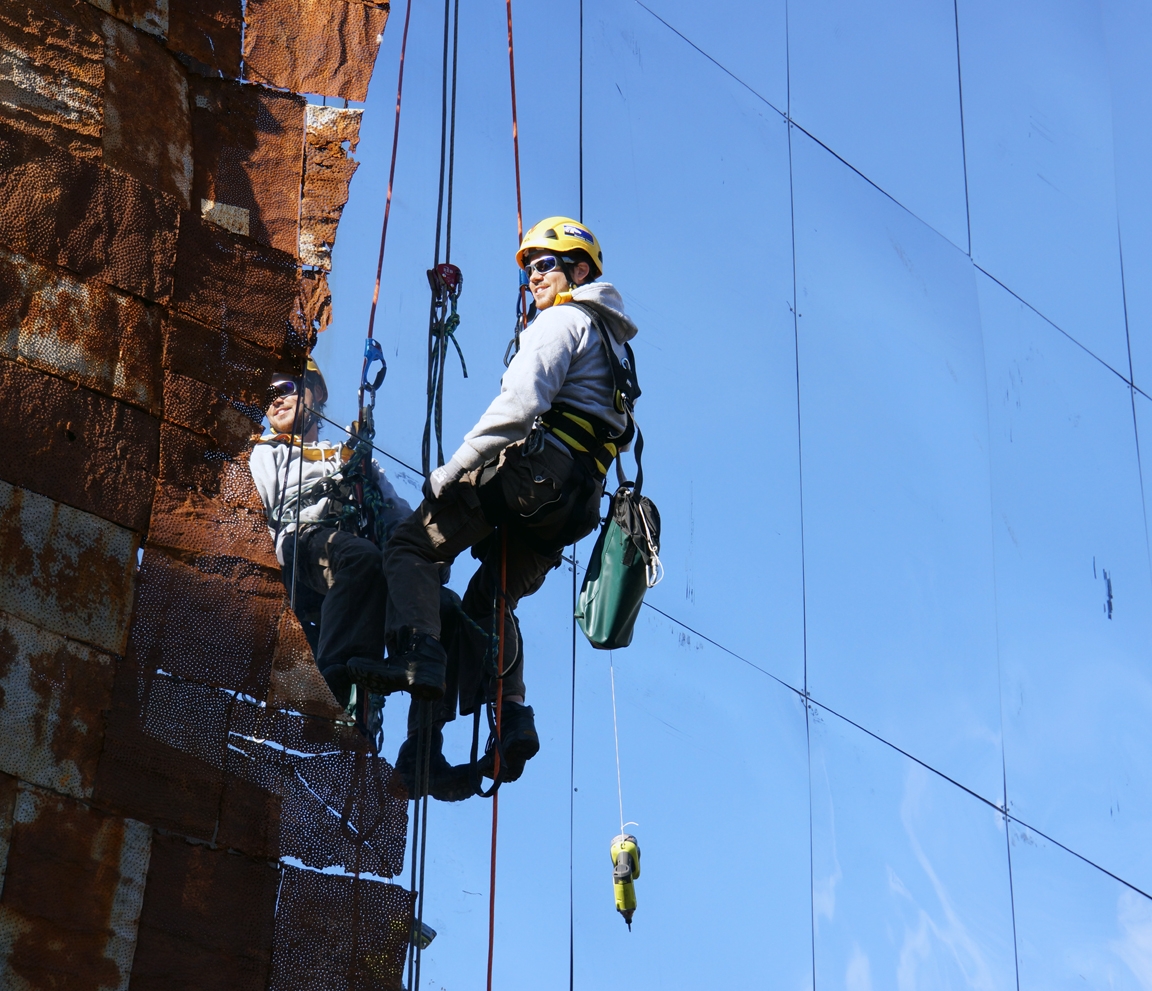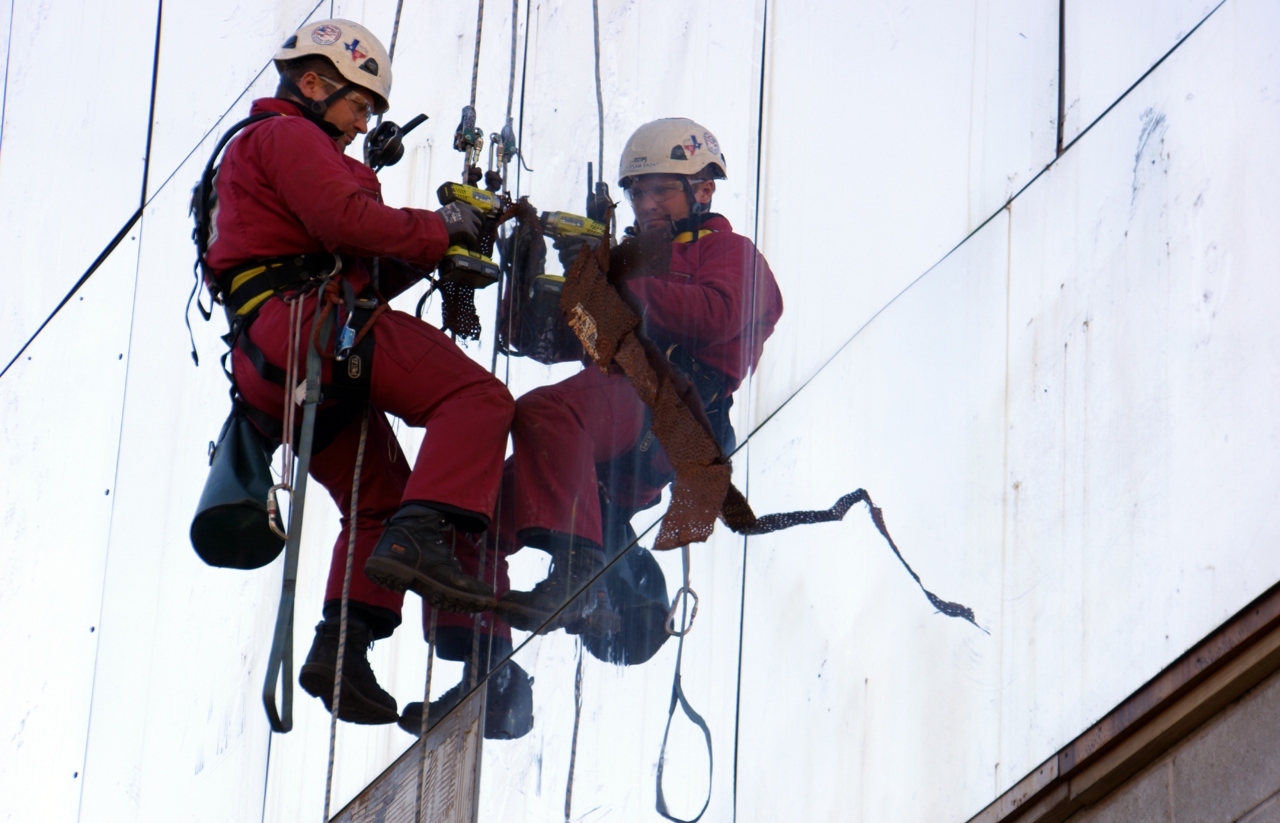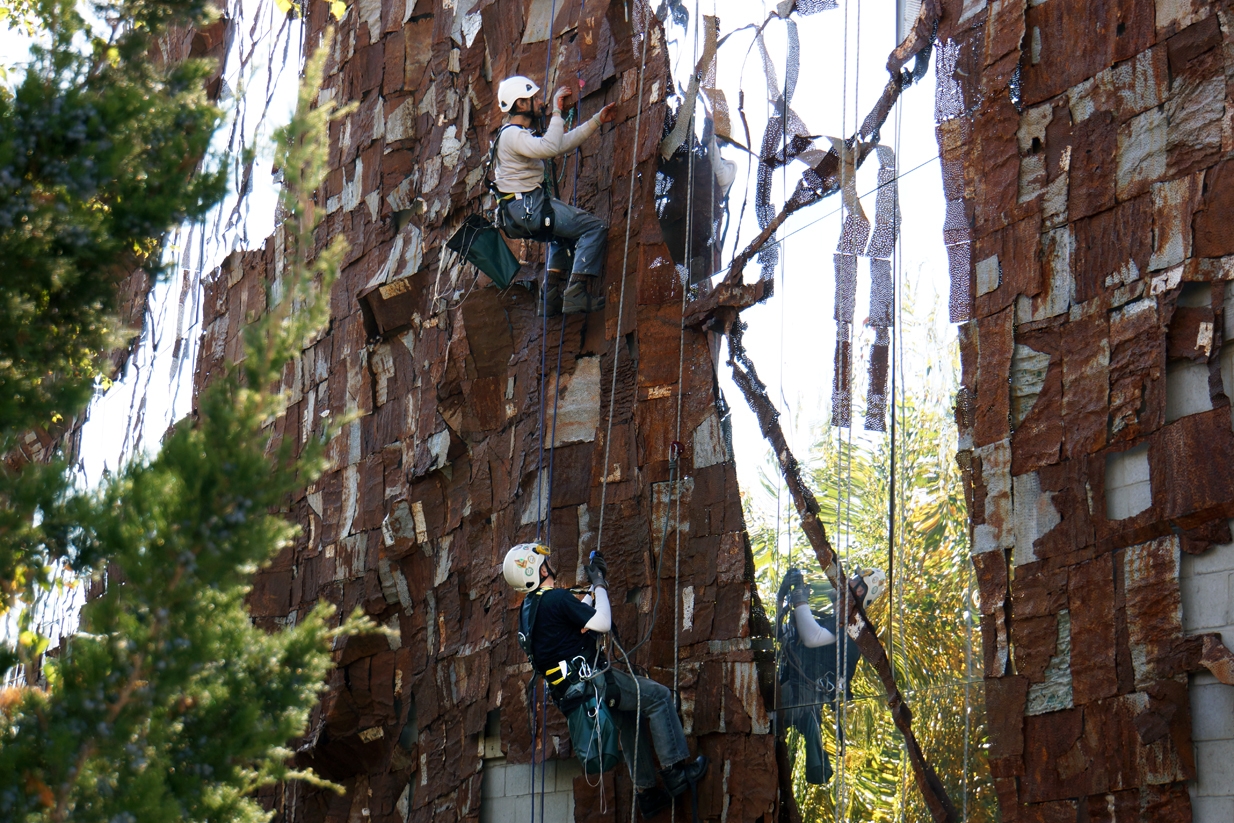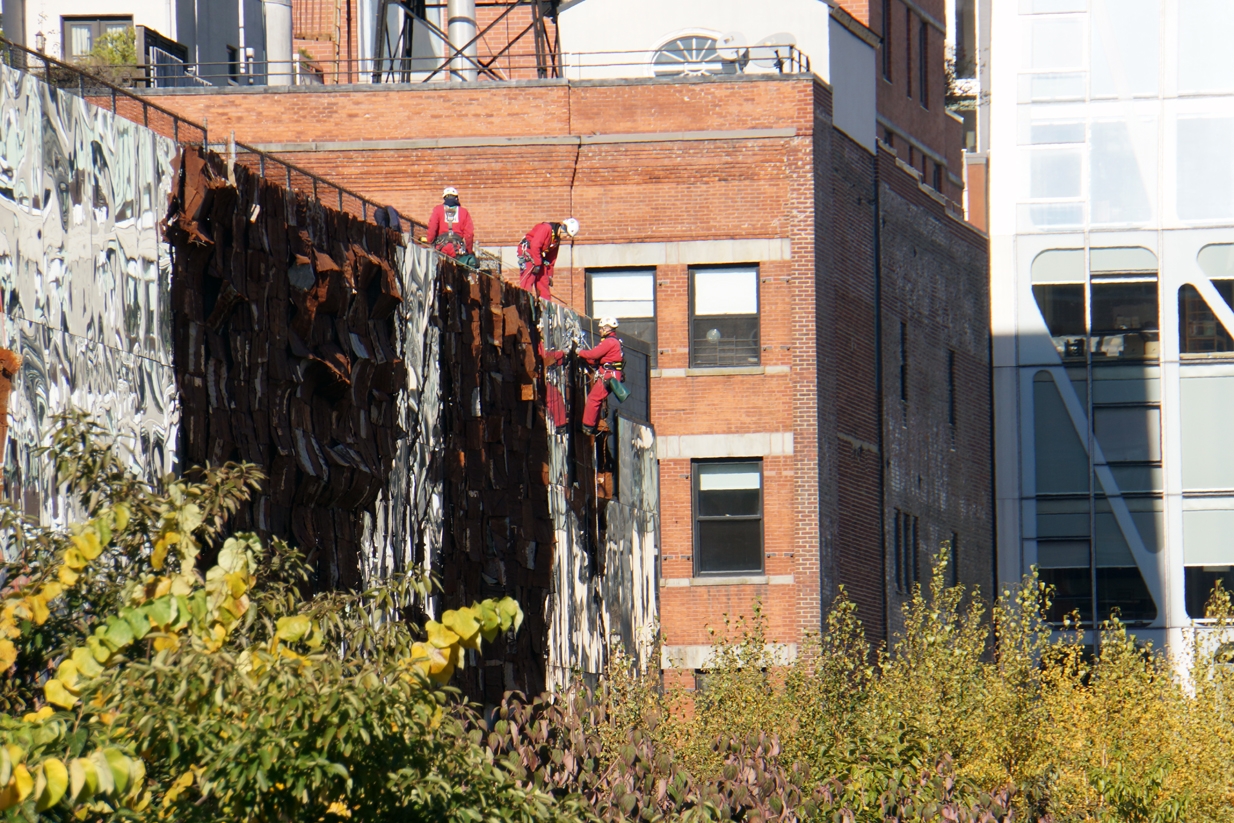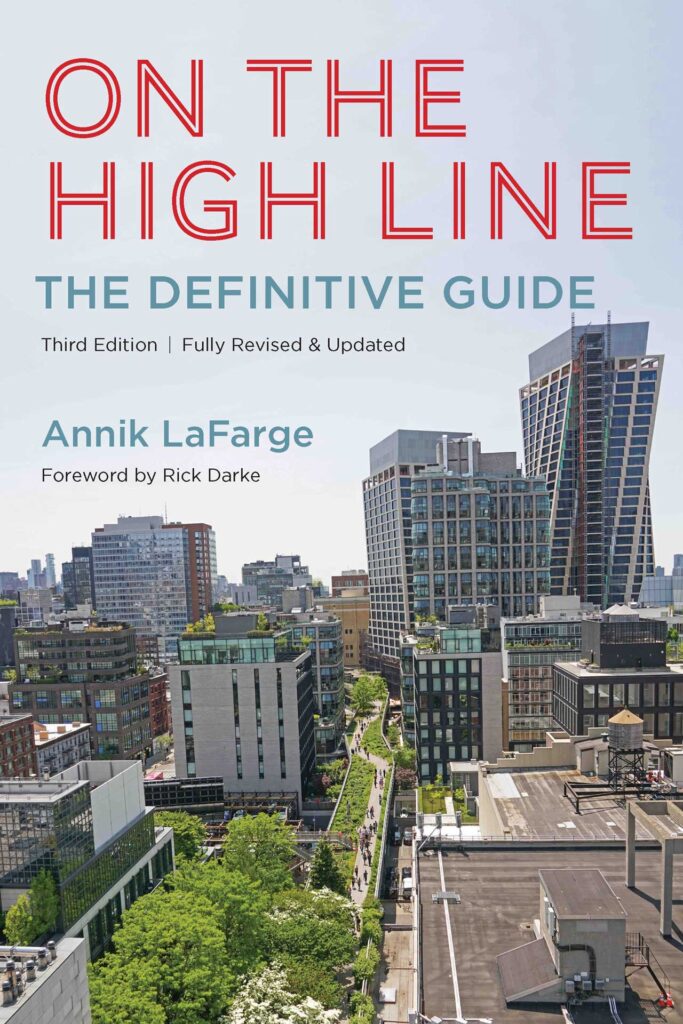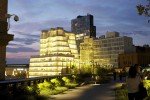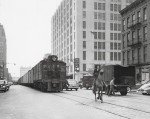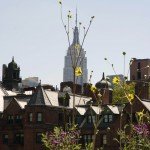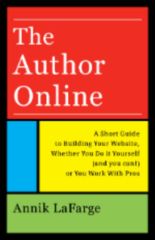Last week, men in helmets attached to climbing ropes rappelled up and down the east wall of 510 West 22nd Street, once a parking garage owned by Time Warner Cable and, for the past year, temporary home to the magisterial artwork Broken Bridge II by West African artist El Anatsui. Of all the many superb works that Friends of the High Line has installed in and around the park, this one — among the first curated by the new head of High Line Art, Cecilia Alemani — has become my favorite.
I’ve lamented the loss of inspiring artworks many times on this blog — most especially Stephen Vitiello’s unforgettable sound piece, A Bell for Every Minute, and Sarah Sze’s architectural magnet for wildlife, Still Life With Landscape (Model for a Habitat) — but this one was different. In part that’s because Broken Bridge II was such a perfectly site-specific piece, and it so brilliantly inhabited and reflected — simultaneously — the landscape it occupied for twelve months. El Anatsui’s tapestry of pressed, rusting tin and mirrored panels fit in perfectly with the steel and glass buildings that are going up all around the High Line, but its mirrors also caught the 19th century water towers around it, those “silent sentries” that define the New York City landscape.
In addition to reflecting the harder realities of the city, Broken Bridge II also reflected the trees and greenery of the High Line. Like the plants in the park, this work was beautiful and interesting to look at throughout the year, because it presented a varied mix of textures and colors that changed constantly, depending on the angle of the sun and the conditions of the sky.
You could walk by it every day for weeks and months and each time you passed you would see it slightly differently.
Most affecting of all, though, was the temporary nature of this work. All the installations and exhibitions in the High Line Art program are on display for a limited time — they range in duration from a month to a year — but there’s one thing that set Broken Bridge II apart: even the building that served as its canvas was a temporary structure, and very soon it too will come down to make way for another “starchitect”-designed shiny glass tower. Impermanence was a fundamental part of this work’s DNA; it was its message and its platform. As the neighborhood transformed itself around El Anatsui’s work, the piece became a powerful visual metaphor for the constantly changing city we inhabit.
And now it is gone. But as the men took down Broken Bridge II, a wonderful thing happened: suddenly, in its mirrored panels, the artwork began to reflect their faces as well. El Anatsui’s piece put the “public” in public art, and for its short life here it truly became a part of the neighborhood. I was awfully sorry to see it go.

